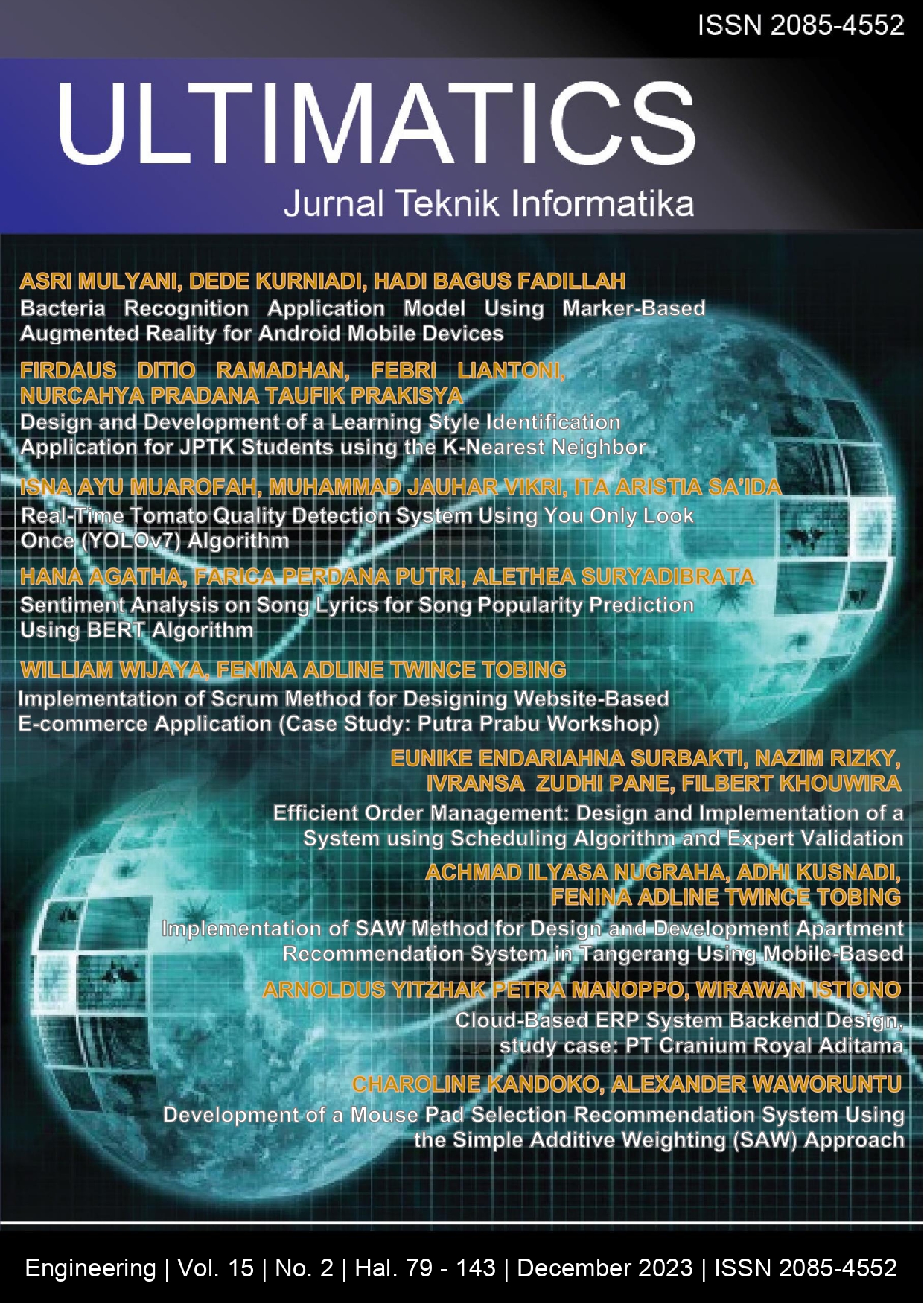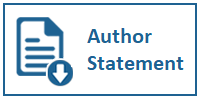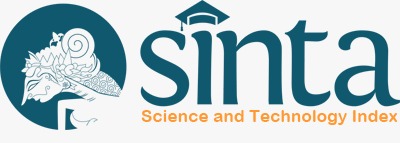Implementation of SAW Method for Design and Development Apartment Recommendation System in Tangerang Using Mobile-Based
DOI:
https://doi.org/10.31937/ti.v15i2.3492Abstract
The house is no longer the sole type of residence available while looking for a place to live. Apartments are a solution for those who need a place to live in locations with limited land, such as Tangerang, in today's period. However, criteria are needed to choose an apartment based on a person's needs, thus in this project, we will develop and create an apartment recommendation system in Tangerang using the SAW approach to make it easy for people to choose the best apartment. The user's choice will be determined by the recommendation system based on their interests, activity, and other data. To put the recommendation system into action, the FMADM method must be employed. A Simple Additive Weighing (SAW) approach is required to complete this FMADM, which is a mechanism for computing the number of performance appraisals for each alternative based on all criteria. This recommendation system is called APARTKU, and it was created with HTML5, CSS, and AngularJS, as well as the Ionic Framework and the Firebase Database. The system was then put to the test by administering questionnaires to 32 respondents using the DeLone and McLean methodologies, and the results were tallied using the Likert Scale method, yielding a score of 90.64 percent, based on the interval on the Likert Scale technique, these results imply that the application has been constructed and designed very well.
Downloads
Downloads
Published
How to Cite
Issue
Section
License
Authors retain copyright and grant the journal right of first publication with the work simultaneously licensed under a Creative Commons Attribution-ShareAlike International License (CC-BY-SA 4.0) that allows others to share the work with an acknowledgement of the work's authorship and initial publication in this journal.
Authors are able to enter into separate, additional contractual arrangements for the non-exclusive distribution of the journal's published version of the work (e.g., post it to an institutional repository or publish it in a book), with an acknowledgement of its initial publication in this journal.
Copyright without Restrictions
The journal allows the author(s) to hold the copyright without restrictions and will retain publishing rights without restrictions.
The submitted papers are assumed to contain no proprietary material unprotected by patent or patent application; responsibility for technical content and for protection of proprietary material rests solely with the author(s) and their organizations and is not the responsibility of the ULTIMATICS or its Editorial Staff. The main (first/corresponding) author is responsible for ensuring that the article has been seen and approved by all the other authors. It is the responsibility of the author to obtain all necessary copyright release permissions for the use of any copyrighted materials in the manuscript prior to the submission.















